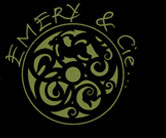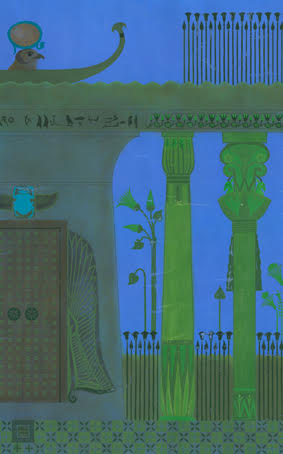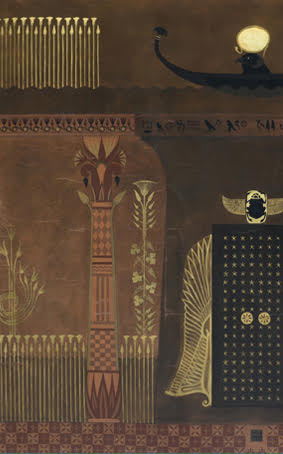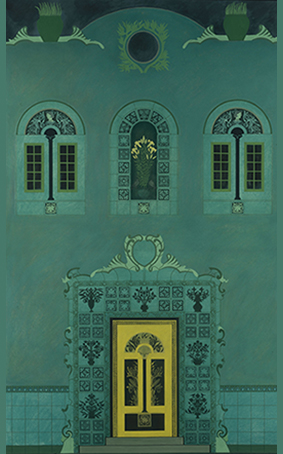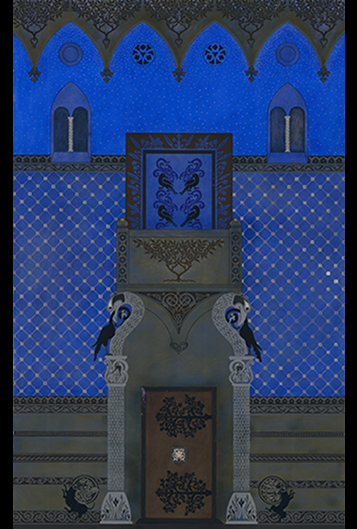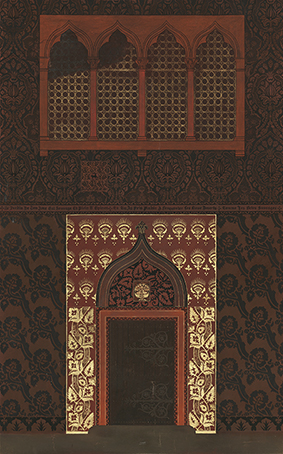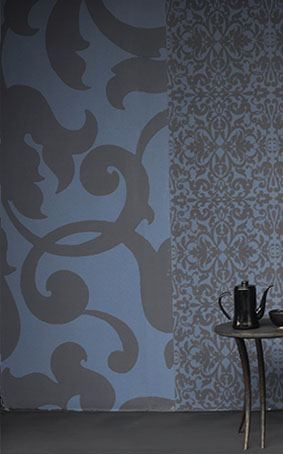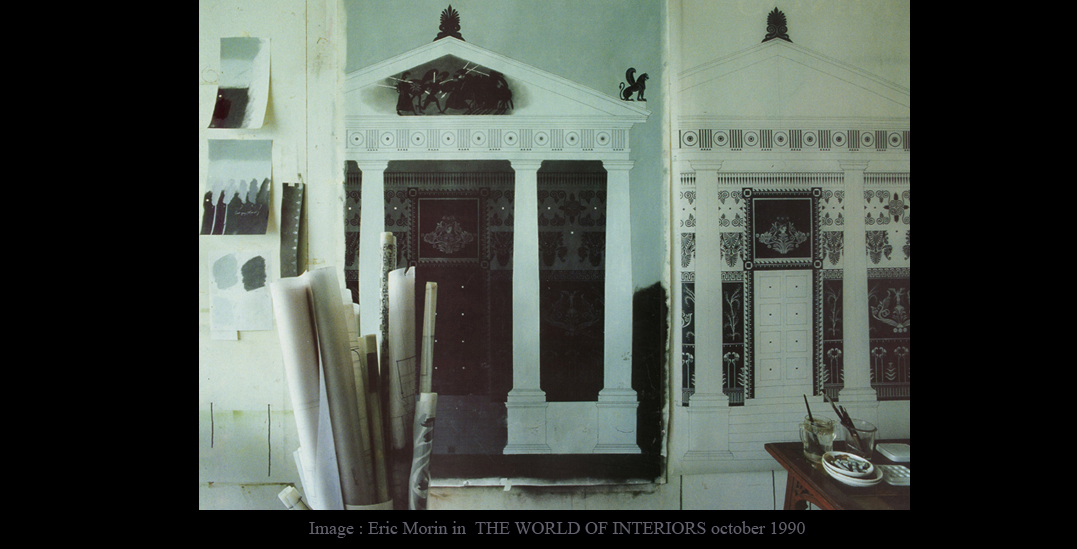
In the 1990s, I was teaching at an architecture school and, at the same time, I created, in solitude
but also with the greatest freedom, a series of large pastel and gouache paintings.
It was the embodiment on paper of the style of architecture I would have wanted to create if I had sought… and found clients.
I also never sought to present these paintings within the art market, out of a personal rejection of that environment,
but above all because I never liked a painting enclosed in a frame and hung on a wall (except in museums).
Following the ideas of William Morris, I have always believed that art must be applied, therefore integrated into all the gestures
of daily life. This is why I studied architecture and not painting. It was therefore perfectly logical that I should launch into the creation of tiles, wall paints, furniture, etc.
An occupation so all-consuming that my large architectural paintings were quickly forgotten at the back of the studio, buried almost like a family secret.
However, in my chosen family, a few people knew this secret. And, in the meantime, a young man dazzled by the panoramic views
of the Zuber Museum in Rixheim decided to set up a digital wallpaper printing company, with
high standards of quality in terms of technology. Because, in the world of digital printing, you can obviously find everything,
from office photocopiers to works purchased by collectors and museums.
I then discovered the incredible possibilities offered by the technique, because the smallest detail, the slightest crack in the original paint, can be enlarged to almost infinite size.
This allows you to select only a part of the painting and adapt it to a piece of furniture or a panoramic view of an entire wall!
The interpretations are limitless, and each one is a unique reinvention of the original work.
